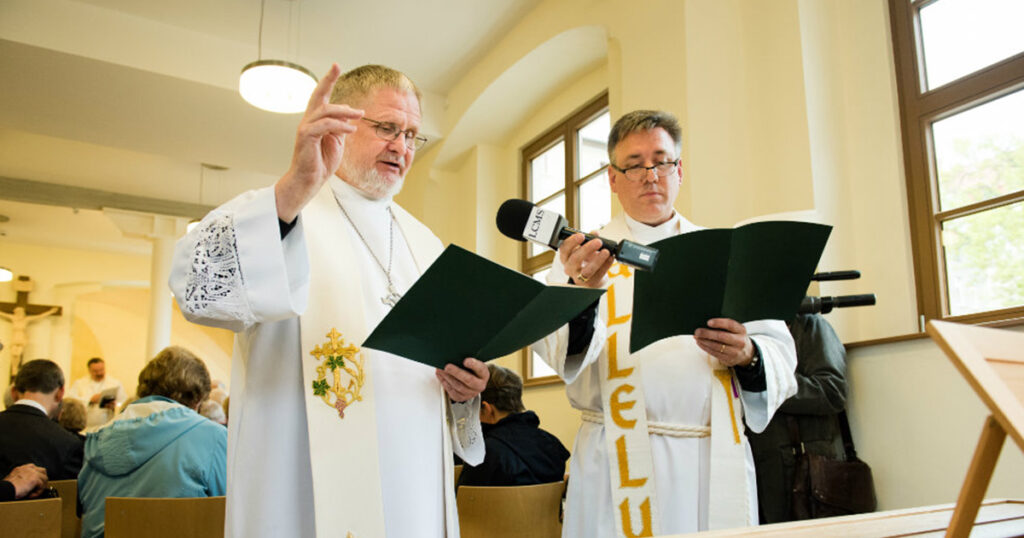by Alan Ludwig
Some years ago I brought a non-Christian relative of mine to a Lutheran service. Afterwards he commented, “You Lutherans are more catholic than the Catholics!” At the time, I found this amusing. After all, my relative knew nothing about doctrine and judged only by what he saw and heard in the liturgy. Once I had attended seminary and learned better what the issues between the Reformers and the church of Rome were, I came to view my relative’s unenlightened comment as eerily on target.
As we rejoice once again this year in the great Reformation solas—by grace alone, by faith alone, Scripture alone—it is good for us to remember that with these, Luther and his associates simply returned us to the catholicity, or universality, of the Christian faith as the church had taught and practiced it from ancient times.
Catholic Doctrine
Nowadays Luther is sometimes portrayed as a firebrand, a revolutionary, who sought to turn the church on her head with all kinds of new teachings. Nothing could be further from the truth. When the Lutherans presented the Augsburg Confession before Emperor Charles V in 1530, they carefully showed that each article of faith and practice was true first of all to Holy Scripture, and then also to the teaching of the church fathers and the councils and even the canon law of the Church of Rome. They boldly claim, “This is about the Sum of our Doctrine, in which, as can be seen, there is nothing that varies from the Scriptures, or from the Church Catholic, or from the Church of Rome as known from its writers” (AC XXI Conclusion 1). The underlying thesis of the Augsburg Confession is that the faith as confessed by Luther and his followers is nothing new, but the true catholic faith, and that their churches represent the true catholic or universal church. In fact, it is actually the Church of Rome that has departed from the ancient faith and practice of the catholic church (see AC XXIII 13, XXVIII 72 and other places).
Catholic Practice
For the Reformers, catholicity did not end with doctrine. The early Lutherans were also diligent to keep the traditional practices and ceremonies of the church, as long as these did not conflict with the Gospel of grace. They claimed not to have invented any new worship forms at all. Any changes that they had made for the Gospel’s sake had a prior history in the church (AC XXIV 35–41). They even claimed to have a more respectable public liturgy than did the church of Rome (Apology of the Augsburg Confession XV 39).
In short, the Reformers sought not to be innovators, but rather to follow only the catholic (universal) faith and practice of the Christian Church. All of this served one end: to glorify The Triune God and the gift of salvation He gives in Jesus Christ, by grace, through faith, dispensed to us in the Word and Sacraments. May we imbibe the evangelical and catholic spirit of our forefathers!
The Rev. Dr. Alan Ludwig is a Theological Educator serving with the LCMS Office of International Mission in Novosibirsk, Russia.




Excellent article. Lutheranism is indeed the true Western Catholic Church cleansed by the Gospel.
EXCELLENT ARTICLE FR. LUDWIG! Really well done!
I’ve been told the Lutheran church is planning to re embràce the Catholic face. ELCA had been doing ashes on ash Wednesday for years. Outer symbols do not convey salvation.dont be fooled . By faith alone. By grace alone. Veneration of saints also does not save you. Don’t give up our faith. I have no desire to kiss the Pope’s ring. Amen
Virginia,
I’m not sure who told you that the Lutheran faith is attempting to embrace the teachings of the Roman Catholic church. The LCMS remains faithful to Scripture and the Lutheran Confessions.
RSA
Thanks for the interesting article!
Couldn’t help noticing the author & 2 pastors in photo all are well known by St. Paul congregation in Royal Oak, MI.
Greetings to 2 memorable & very finest vicars 😊 & fascinating German Interest Group speaker!!! Looks like a photo from Wittenberg!!!